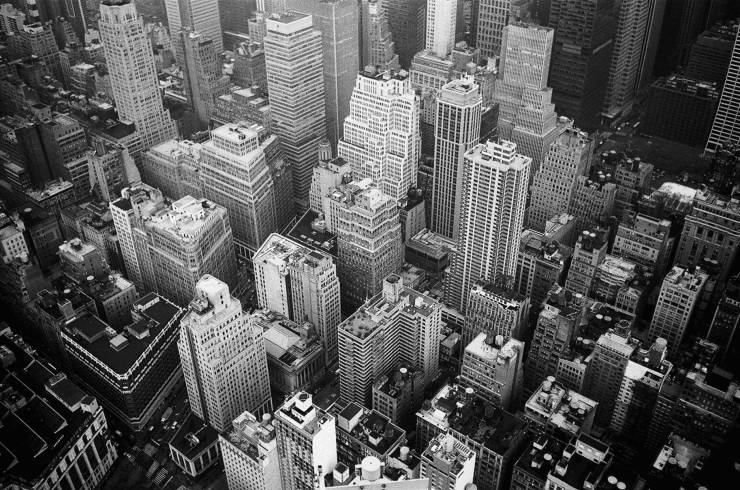As I’ve written in these pages before, for startups working on innovative tech in the real estate sector, a compelling market is emerging here in Japan. Whether it be property management tools, construction tech, blockchain-based real estate solutions, commercial and residential marketplaces, etc., there is demand.
Now, the Coronavirus pandemic appears to be accelerating the innovation drive of Japan’s real estate developers. To delve deeper into this topic, I have sought the wisdom of Agya Ventures, a VC fund purely focused on early stage proptech startups (full disclosure: I am an advisor of Agya). Much of what follows is an extract of Agya’s detailed assessment, The Future of Real Estate Post Coronavirus. Feel free to contact me directly if you are interested in the full paid version of the report.
The coronavirus pandemic has fundamentally transformed the real estate landscape. Office buildings and standalone retail stores have shut down and malls are vacant. Common areas in residential buildings are empty and people are spending more time at home than they have before. In-person conversations have shifted online, and the definition of a community stands altered.
Agya has examined what a new normal in real estate might look like in the post coronavirus environment, and where technology will play a role. Seven key trends that deserve the attention of senior management at companies with real estate holdings: (1) Increased Hygiene, (2) Social Distancing, (3) Healthy Buildings, (4) Shifts in Mobility, (5) Virtual Everything, (6) Eating Out While Eating In, and (7) Doing More With Our Space.
I will discuss the first three trends here and cover the remaining four trends in a subsequent piece.
Increased Hygiene
Growing standards of hygiene will permeate across real estate asset classes. Technology that makes real estate contactless and frictionless will go a long way in enabling landlords to adhere to growing demands of cleanliness. In this context, Agya foresees growing demand for:
- Hands-free access control systems: Such systems leverage cellular data, bluetooth or WiFi and enable entry into buildings and offices through tenant smartphones. Further, access can be issued by accredited individuals within a building to guests through a mobile guest pass effectively bypassing the need for a front desk or paper-based entry cards.
- Automatic door openers: With the ability to retrofit almost any door, automated operators will become a key component in making office spaces contactless.
- Elevator holograms: Elevator buttons are a high-touch zone, and holograms could substitute for physically touching these buttons. In technology that is relatively nascent, early adopters will need to pay specific attention to integration with existing elevator numberpads.
- Elevator voice control systems: An alternative to elevator holograms are voice control systems that give people another contactless approach to get to their desired floors.
- Cleaning robots: Consistent cleaning rests central to hygienic real estate, and robots are expected to play a bigger role in the built world. While robots have already been in warehouses and large retail facilities, and often come armed with infrared, gyroscopic, ultrasonic and camera sensors, the time is ripe for a lighter robot that can effectively navigate its way in residential and office buildings.
Social Distancing
Encouraging people to return to offices will partly be contingent on ensuring effective measures for social distancing. Employers and landlords should look at incorporating both technology and design changes to help facilitate this in a timely manner.
- People counters: Installing sensors that measure real-time space occupancy will allow property managers and retail store operators to better manage traffic. Corroborating this occupancy data with recommended safe levels of density will ensure that offices and stores don’t get overcrowded.
- Dividers: The traditional office cubicle or open floor plans made popular by coworking spaces could give way to the 6-feet office that ensures reasonable distance between employees.
- Wearables: Devices that warn individuals when they come in close proximity with others will gain traction in densely populated settings. While contact tracing apps usually have a lag and come with privacy concerns, certain wearables provide a more preventive solution for social distancing.
Healthy Buildings
In what is increasingly relevant today, the Harvard School of Public Health’s ongoing research for what constitutes a ‘healthy building’ underscores how workplace productivity can be enhanced by quality of office spaces. While Agya forecasts a graded Healthy Building Rating System similar to the LEED Rating System coming to fore over time, some key aspects to make buildings healthier in the near future include:
- Temperature tracking cameras: At the heart of keeping a building healthy is a mechanism that tracks people who are symptomatic. The installation of temperature tracking cameras lobbies can lead to privacy issues but is now considered essential.
- Smart windows: Windows that enhance natural light – said to reduce eye strain, headache and drowsiness – and reduce glare and heat, stand to generate greater interest from real estate developers.
- Advanced ventilation systems: Deemed as the “most valuable healthy building tool during COVID-19,” advanced ventilation systems are poised to become another must have. In particular systems that induce clean air ventilation, where fresh outside air is pumped in (versus recycling existing air), and negative air pressure that prevents pathogens from spreading should rise in importance.
- Hygienic surfaces: Copper alloy surfaces and antimicrobial polymers that resist the spread of bacteria have traditionally been used in hospitals. These will likely be adopted into commercial office spaces as well, particularly when it comes to the introduction of copper alloy for door handles and handrails.
- Rooms for meditation and spaces for exercise: Amenities that allow tenants to remain calm and fit are complementary to a healthy building. Specifically, leveraging underutilized real estate space on an existing floor and carving out dedicated fitness areas can help accomplish that.
In the second part of this article I will discuss the remaining trends of (4) Shifts in Mobility, (5) Virtual Everything, (6) Eating Out While Eating In, and (7) Doing More With Our Space.

